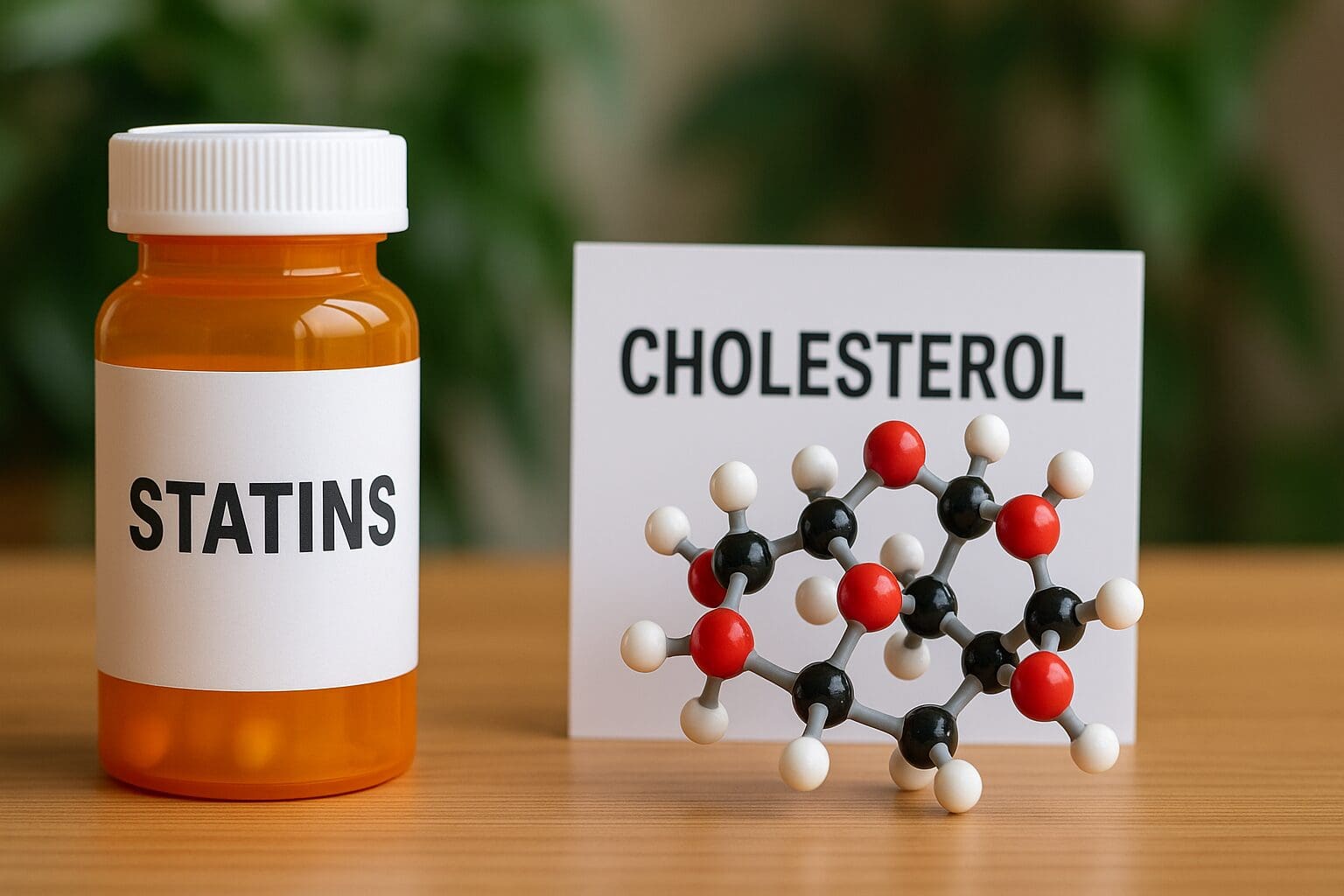Introduction
Lipid-lowering medications, such as statins and ezetimibe, play a pivotal role in managing cholesterol levels, supporting heart health, and reducing the risk of heart disease. When included as part of a comprehensive treatment plan that also emphasizes lifestyle changes, these medications help many people achieve optimal heart outcomes. This guide will clearly explain how common lipid-lowering drugs work, their benefits and side effects, and how they fit into a broader approach for achieving optimal heart health.
What is Explain common lipid‑lowering medications, benefits, side effects, and how they fit with lifestyle.?
Lipid-lowering medications are a group of drugs designed to reduce levels of harmful cholesterol (especially LDL) and other blood lipids known to raise the risk of heart disease. The most well-known are statins, discovered in the 1970s, which block a liver enzyme involved in cholesterol production. Ezetimibe reduces cholesterol absorption from the intestine. Other newer agents, like PCSK9 inhibitors, offer additional cholesterol-lowering for those who need more help. All these medications are essential for maintaining heart health and targeting an optimal heart, especially in people with risk factors for heart disease [Silverman, 2016].
Benefits and Outcomes in Heart Disease
Statins, ezetimibe, and similar lipid medications have robust clinical evidence showing they significantly lower LDL cholesterol and reduce the risk of heart attacks, strokes, and death from heart disease [Cholesterol Treatment Trialists, 2019]. Statins, for example, can lower LDL cholesterol by up to 50% or more, directly improving heart health outcomes [Stone, 2019]. Ezetimibe, when added to a statin, brings even further benefit, especially for those at high risk or unable to tolerate high statin doses [Cannon, 2015]. Newer drugs like PCSK9 inhibitors significantly lower cholesterol and further reduce cardiovascular events in selected patients [Sabatine, 2017]. All these agents help prevent arterial plaque build-up, stabilize existing plaques, and decrease inflammation, delivering long-term benefits for those aiming for an optimal heart [Ference, 2017].
Research Insights
Major studies confirm that statins can cut cardiovascular risk by at least 25% per mmol/L of LDL reduced, regardless of age or baseline cholesterol level [Cholesterol Treatment Trialists, 2019]. The IMPROVE-IT trial demonstrated that adding ezetimibe to simvastatin led to incremental benefits in both LDL lowering and event reduction, especially after a heart attack [Cannon, 2015]. PCSK9 inhibitors, based on the FOURIER trial, can lower LDL by an additional 60% and substantially reduce heart attack and stroke risk in people already on statins [Sabatine, 2017]. Additionally, systematic reviews confirm these meds are safe for long-term use and associated with improved all-cause and cardiovascular mortality [Silverman, 2016].
Practical Applications
For most adults at elevated risk for heart disease, statins are usually the first-line medication, taken daily by mouth. Dosage varies based on individual risk; common options include atorvastatin (10–80 mg) or rosuvastatin (5–40 mg). Ezetimibe (10 mg daily) may be added when further LDL lowering is needed or if statins can’t be tolerated. PCSK9 inhibitors (injected every 2–4 weeks) are reserved for very high-risk patients or those with familial hypercholesterolemia [Stone, 2019]. Combining medication with dietary improvements, regular exercise, and not smoking delivers the best chance for optimal heart health. Always consult with a healthcare professional to tailor therapy and monitor for effectiveness and safety [Ference, 2017].
Risks & Limitations
While highly effective, lipid-lowering medications can cause side effects. Common issues include muscle aches and mild liver enzyme elevations with statins [Stone, 2019]. Ezetimibe is usually well tolerated but may cause mild gastrointestinal discomfort. PCSK9 inhibitors can cause injection-site reactions. Serious side effects are rare, and benefits for heart health almost always outweigh risks. However, some people (e.g., pregnant women or those with active liver disease) should avoid certain medications [Silverman, 2016]. Research on the long-term safety of PCSK9 inhibitors is still ongoing, but current data is reassuring [Sabatine, 2017].
Key Takeaways
- Statins, ezetimibe, and related drugs are proven tools for improving heart health and achieving an optimal heart.
- These medications substantially reduce LDL cholesterol—a key driver of cardiovascular disease.
- Combining medication with healthy lifestyle choices yields the best outcomes for heart health.
- Side effects are generally mild; most people can safely achieve an optimal heart with appropriate monitoring.
- Ongoing medical consultation is important for maximizing benefits and minimizing risks.
Frequently Asked Questions
1. Are statins safe for long-term use?
Yes, large studies show statins are safe and effective for many years, with rare serious side effects [Silverman, 2016].
2. Can lifestyle changes alone be enough for optimal heart health?
Lifestyle changes are vital, but those at high risk of heart disease often also need medication to reach cholesterol targets for optimal heart health [Ference, 2017].
3. What if I can’t tolerate statins?
Ezetimibe and other alternatives may be used for those who experience side effects, under medical supervision [Cannon, 2015].
4. Do these medications help people without prior heart issues?
Yes, primary prevention with statins in high-risk individuals helps delay or prevent heart disease and supports optimal heart health [Stone, 2019].
Suggested Links
- American Heart Association – Cholesterol Medications
- NIH – MedlinePlus: Cholesterol-lowering Medicines
- PubMed – Lipid-Lowering Drugs and Heart Disease
Conclusion
Understanding statins, ezetimibe, and related medications is essential for anyone aiming to protect their heart health and achieve an optimal heart. These drugs, when combined with dedicated lifestyle changes, help millions reduce their risk of serious cardiovascular events. Work with your healthcare team to personalize your plan and stay proactive in pursuing the best possible heart health outcomes.



